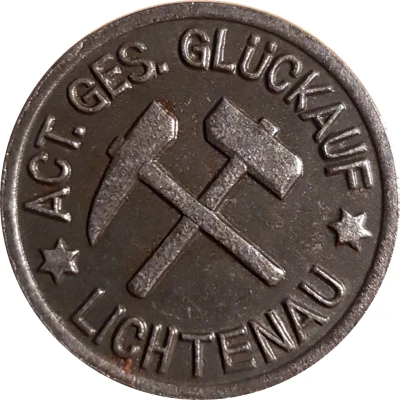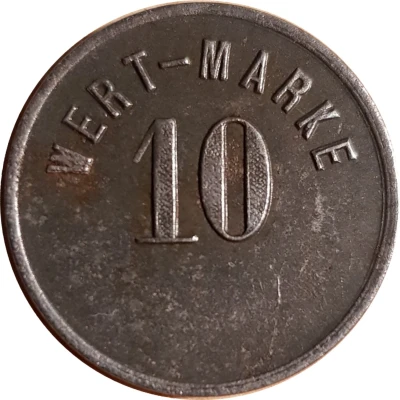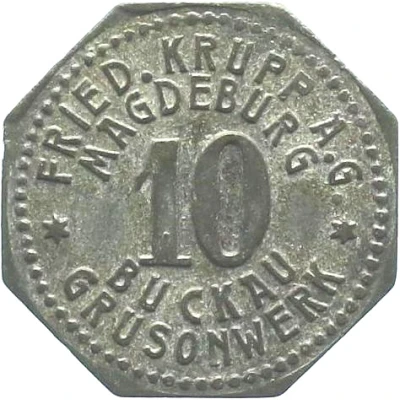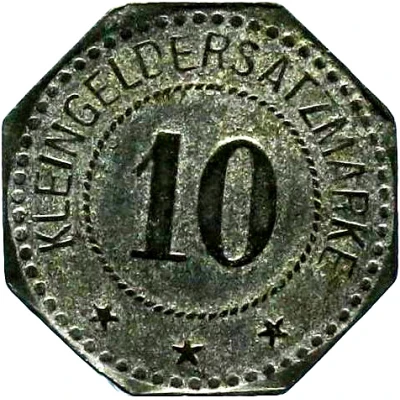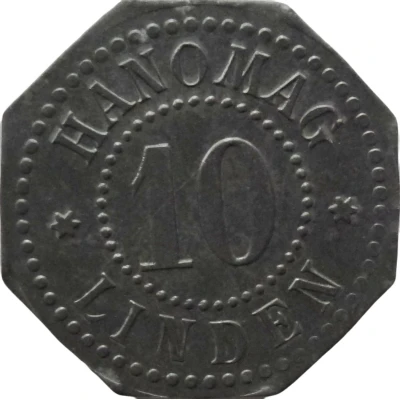
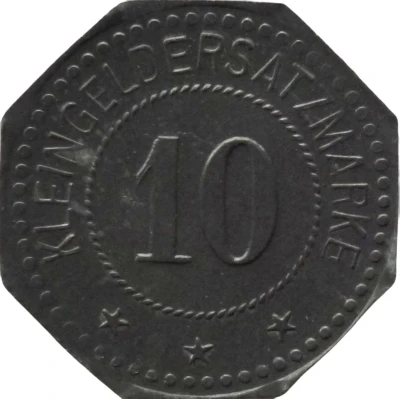

© Willem63 (CC BY-NC-SA)
10 Pfennigs - Linden (Hanomag) ND
| Zinc | 2.2 g | 20.8 mm |
| Issuer | German notgeld (Germany) |
|---|---|
| Type | Standard circulation coin |
| Value | 10 Pfennigs (10 Pfennige) (0.10) |
| Currency | Mark (1914-1924) |
| Composition | Zinc |
| Weight | 2.2 g |
| Diameter | 20.8 mm |
| Thickness | 1.1 mm |
| Shape | Octagonal (8-sided) |
| Technique | Milled |
| Orientation | Medal alignment ↑↑ |
| Demonetized | Yes |
| Updated | 2024-10-04 |
| Numista | N#341705 |
|---|---|
| Rarity index | 95% |
Reverse
Pearl rim, legend surrounding rope circle with denomination centered
Script: Latin
Lettering:
KLEINGELDERSATZMARKE
10
★ ★ ★
Edge
Plain
Comment
Menzel: BBBFa: Maschinenbau Gesellschaft
On June 6, 1835, in Linden Hanover, the mechanical engineering and Iron foundry was founded by George Egestorf and from 1871 the name “Hannoversche Maschinenbau Aktien Gesellschaft” arose.
this company was known as a manufacturer of steam plows, boilers, locomotives and steam winches. The factory was
based in Linden. In 1904 the name HANOMAG appears for
the first, abbreviation of "Hannoverschen Machinenbau Aktien Gessellschaft".
Interesting fact
One interesting fact about the 10 Pfennigs - Linden (Hanomag) ND coin from German notgeld (Germany) made of Zinc weighing 2.2g is that it was issued during a time of economic crisis in Germany, specifically during the hyperinflation period of the 1920s. The coin was part of a series of emergency currency issued by local authorities, known as "notgeld," which translates to "emergency money" in English. The coin's design features a linden tree, which is a symbol of peace and hope, and was meant to convey a sense of stability and security during a time of economic uncertainty.
